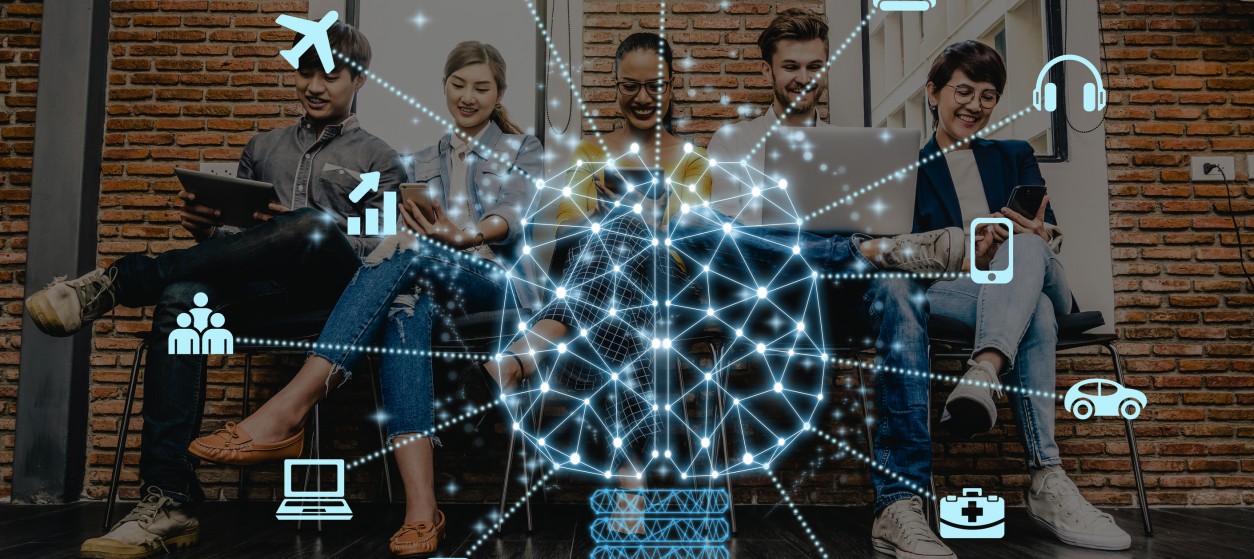Chatbots have been one of the most trending technology topics during the last year, as Facebook announced support for chatbots in its Messenger app and research firms such as Gartner highlighted the merits of chatbots deployments in enterprise environments. A chatbot is a conversational software agent (i.e. a computer application) that can simulate a conversation with human users. Chatbot conversations are based on natural language and are outputted based on either auditory or textual modalities. They are considered intelligent agents and are sometimes called “chatter robots”.
In practice, chatbots operate as virtual assistants, which are appropriately programmed in order to automatically respond to their users’ queries or requests. A typical chatbot scenario starts with a user that makes a request or asks a query to the conversational system. The chatbot software analyzes this request using artificial intelligence (AI) techniques, while taking into account information and context about the users such as his/her preferences, past queries and locations. This analysis is typically performed fast in order to allow the chatbot to produce an almost real-time response to the user’s query. It is typical for chatbots to personalize their interactions for each user.
The rising popularity of chatbots is not just related to the benefits they deliver to their users, but also to the fact that they are suitable for a wide range of applications.
Benefits of Chatbots
In principle, chatbots, are yet another technology that reduces agency costs as conversational agents can be used, in several settings, to replace human agents. Compared to other computer-based service systems, chatbots provide better control on the flow of information, which reduces the information asymmetry and makes the interaction more appealing.
The increased interest in chatbots goes beyond the prominent business benefits of a self-service modality. One of the reasons is the rising use of messenger and chatting applications, which are for several users the primary channel of communication with friends and family. This above is also true for users using messenger for collaborating at work. For example, several users prefer chatting on Facebook Messenger, Skype and Slack to interactions through social networks, as their interactions can be instant, asynchronous and under fine-grained privacy. Hence, by integrating chatbots in these platforms, service providers can assist users based on chatting, which is a modality that they are comfortable and familiar with.
Another factor that explains the interest in chatbots is that they provide the means for personalized and human centered interactions. This is especially true for “intelligent” chatbots which employ artificial intelligence in order to individualize conversations to user needs. Likewise, chatbots can be used to develop customized branding messages in the scope of corporate services.
Chatbot Applications
Some of the most prominent applications of the chatbot (human-centered, personalized) interface can be found in the following areas:
- E-commerce: When users of electronic commerce need to interact with the merchant on-line, chatbots come to the rescue. That’s a common application for chatbots, as these are used to provide detailed information about available products and services. E-commerce bots help customers find the best option or configuration, while at the same time delivering product recommendations to customers. Likewise, chatbots are enhanced with capabilities of delivering information about price alerts or special offers. In cases of unconventional requests, chatbots can connect the user to some human agent for more information.
- Banking: E-banking systems are increasingly integrating chatbots as a means of interacting with customers. In this context, chatbots not only provide information about the bank’s services but also information about balances, deposits and past transactions. In several cases chatbots are used to perform simple financial transactions as well. E-banking chatbots tend to be popular since they save waiting times in the call center, while at the same time enabling instant interactions.
- Infotainment: Chatbots serve also as sources of information, which is combined with entertainment services. For example, they deliver jokes, pictures, videos and other fun activities to their users, which makes the task of finding information easier and entertaining. Big brands utilize chatbots in this way, in order to successfully deliver marketing messages.
- Events or Appointments Reservation: Booking a concert ticket, reserving a table in a restaurant, or even scheduling a doctor’s appointment are all simple transactions that are performed through chatbots. Chatbots enhance also the booking support with personalized recommendations based on information from past bookings and the user’s profile.
- Enterprise systems: Chatbots are used as an interaction modality for enterprise systems and applications such as Enterprise Resource Planning (ERP) and Customer Relationship Management (CRM) systems. In particular, they are used to flexibly deliver to end-users information about meetings, customer orders, shipment of orders and more.
The list is non-exhaustive, as chatbots can be used into virtually any application areas instead of a conventional web or mobile application interface. Indeed, several of the above use cases are already provided through other interfaces as well, such as web portals, even over voice portals and IVR (Interactive Voice Response) systems. In such cases, chatbots are a more intelligent and personalized interface from what already exists.
Development Platforms for Chatbots
The increased interest in chatbots is also reflected in the rise of platforms for developing chatbots. As already outlined, Facebook Messenger has integrated functionalities for developing chatbots. Relevant applications enable fetching of personalized information based on (past) keywords provided by the user in Facebook chat. Facebook chatbots can be deployed in replacement of a user’s accounts i.e. they can be used to respond instead of a user during his/her chat activities in Facebook.
Apart from facebook, WeChat is another social media platform that provides support for chatbots. It provides the means (including an API) for constructing, programming and deploying chatbots. As a third example, chatbots can also be created on top of Slack. Slack introduces the notion of bot users, which are virtual users that are represented in the platform by chatbot programs. Bot users exist in the Slack platform like any other user, yet interaction with them means that you are interacting with a software agent rather than with a human user.
It’s certainly time you think how chatbots could work to your benefit. As platforms, tools and machine learning techniques for chatbots are becoming widely available, it’s most important to find a business case in which chatbots save you time and effort, and overall improve your business results.










